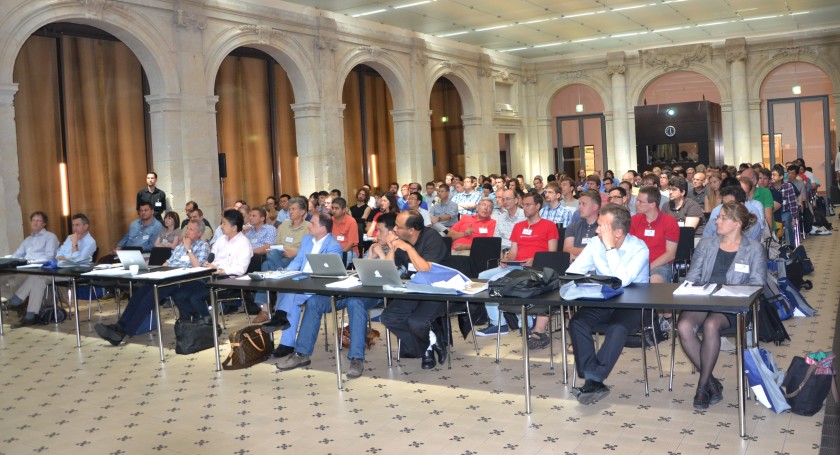Leading scientists on topological insulators met in Berlin

Outstanding researchers took part in the “New Trends in Topological Insulators 2014” - workshop.
From July 7-10, 150 researchers met in Berlin to discuss recent findings in the field of topological insulators.
Topological insulators are a rather new form of quantum matter with an insulating bulk and a metallic surface created by topologically protected and spin polarized electronic states.
Outstanding researchers took part in the “New Trends in Topological Insulators 2014” - workshop, organized by Gustav Bihlmayer (Forschungszentrum Jülich) and Saskia Fischer (Humboldt University and Oliver Rader of HZB. 20 speakers had been invited for presentations, the 2012 Buckley Prize winners Shoucheng Zhang and Laurens W. Molenkamp (also Leibniz Prize 2014), Zhi-Xun Shen (Buckley prize 2011) and Yoichi Ando (2014 Inoue Prize for Science) being among them.
Breakthrough results were delivered on topics such as optical excitation, electron-photon entangled states, the role of electron correlation as well as imaging of helical edge states and Majorana fermions.
The event took place on the premises of the Berlin-Brandenburg Academy of Sciences. It has been generously supported by DFG as well as HZB.
Oliver Rader / kmh
https://www.helmholtz-berlin.de/pubbin/news_seite?nid=14031;sprache=en
- Copy link
-
The twisted nanotubes that tell a story
In collaboration with scientists in Germany, EPFL researchers have demonstrated that the spiral geometry of tiny, twisted magnetic tubes can be leveraged to transmit data based on quasiparticles called magnons, rather than electrons.
-
Ernst Eckhard Koch Prize and Innovation Award on Synchrotron Radiation 2025
At the 27th BESSY@HZB User Meeting, the Friends of HZB honoured the dissertation of Dr Enggar Pramanto Wibowo (Friedrich-Alexander University Erlangen-Nuremberg). The Innovation Award on Synchrotron Radiation 2025 went to Prof. Tim Salditt (Georg-August-University Göttingen) and Professors Danny D. Jonigk and Maximilian Ackermann (both, University Hospital of RWTH Aachen University).
-
Bright prospects for tin perovskite solar cells
Perovskite solar cells are widely regarded as the next generation photovoltaic technology. However, they are not yet stable enough in the long term for widespread commercial use. One reason for this is migrating ions, which cause degradation of the semiconducting material over time. A team from HZB and the University of Potsdam has now investigated the ion density in four different, widely used perovskite compounds and discovered significant differences. Tin perovskite semiconductors produced with an alternative solvent had a particular low ion density — only one tenth that of lead perovskite semiconductors. This suggests that tin-based perovskites could be used to make solar cells that are not only really environmentally friendly but also very stable.
